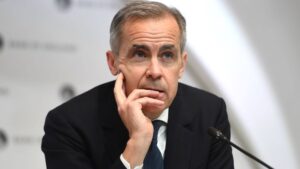Exxon Mobil steps up assets sales with sweeping $25bn plan
3 min read
LONDON: Exxon Mobil (XOM.N) is accelerating its biggest asset sales in decades with plans to divest up to $25 billion of oil and gas fields in Europe, Asia and Africa as it sharpens its focus on a handful of mega projects at home and abroad.
The vast program follows growing pressure from investors on the U.S. giant to free up cash as it plans to expand its spending for new developments in Guyana, Mozambique, Papua New Guinea and the United States.
The Irving, Texas-based company has drawn up in recent months an extensive list of assets that spans at least 11 countries it wants to sell that will easily exceed its current $15 billion disposal target for 2021, according to the sources.
An Exxon spokeswoman said the company does not “comment on market rumors or speculation.”
Exxon, the world’s top listed energy company, has struck a number of deals in recent months including the $4.5 billion exit from Norway, and is also already offering assets in Australia, Nigeria, Malaysia.
The expanded plan will see Exxon effectively quitting its upstream oil and gas operations in Europe, where it has been present for over 120 years, with the planned sales out of the British North Sea, Germany and Romania.
That will leave Exxon with production in the Netherlands, where it holds a stake together with Royal Dutch Shell in the giant Groningen gas field which the government plans to shut down in 2022.
The plan would also see Exxon significantly pare back operations in Southeast Asia with the sale of its assets in Indonesia and Malaysia, the sources said.
In Africa, Exxon wants to sell its operations in Chad, Equatorial Guinea as well as parts of its Nigerian assets.
While Exxon is set to ramp up its spending sharply in the coming years to develop new oil and gas projects, most of its peers have more cautious spending plans due to an uncertain outlook for oil prices and growing pressure from investors to diversify away from fossil fuels toward renewables.
Exxon responded more slowly to the 2014 oil price crash than some of its rivals that sharply cut spending, putting it under large pressure from shareholders to reduce costs. Exxon’s shares heavily underperformed relative to other Oil Majors over the past five years.
Unlike rivals such as Shell and BP, Exxon did not carry out major review of its portfolio in recent decades. BP sold over $65 billion of assets following the 2010 Deepwater Horizon spill in the Gulf of Mexico while Shell sold over $30 billion after acquiring rival BG Group in 2016.
But under Chief Executive Darren Woods, Exxon is set to sharply increase its spending in the coming years as it launches new, large oil and gas developments including in Guyana, Mozambique, Brazil, Papua New Guinea, the United States and possibly Qatar.
In its 2019 investor day, the company said it planned to boost its annual capital spending from $26 billion in 2018 to $30-$35 billion between 2021 and 2025.
The large spending plans are however set to weigh on Exxon as oil prices remain stubbornly close to $60 a barrel.
Moody’s Investor Service on Tuesday changed Exxon’s outlook to negative from stable due to its negative free cash flow and anticipated use of debt to fund its future capital spending.
Moody’s has forecast negative free cash flow of about $7 billion this year and $9 billion next year.
“The company’s high level of growth capital investments cannot be funded with operating cash flow and asset sales at projected levels given ExxonMobil’s substantial dividend payout, absent meaningfully higher commodity prices and earnings from downstream and chemicals,” Moody’s said. Courtesy Reuters





